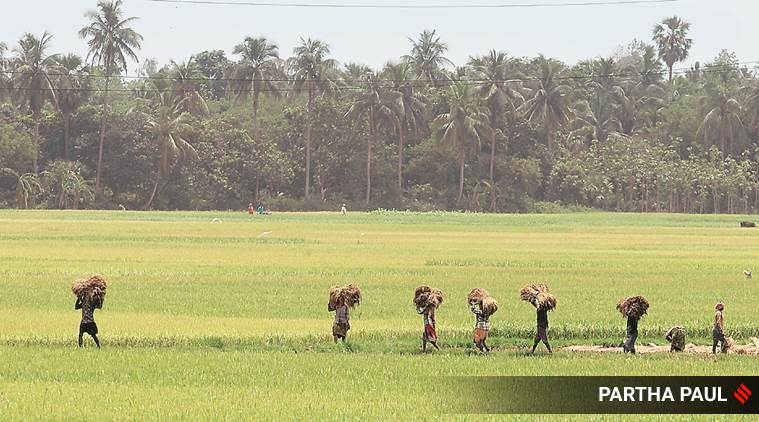
The Indian Express
‘Enough local labour available in Punjab for paddy sowing’
"Some migrant labourers are available in Punjab, while we have plans to use direct seeding system and mechanised paddy transplantation as well."
by Raakhi JaggaAmid talk of labour shortage ahead of paddy sowing season, Punjab Agriculture Secretary Kahan Singh Pannu tells Raakhi Jagga about various challenges faced by the agrarian state during the Covid crisis.
Cotton sowing is at its last phase. Is the area under cotton being increased looking at the labour shortage for paddy transplantation?
Cotton sowing is done in eight districts of Punjab — Moga, Faridkot, Barnala, Sangrur, Mansa, Muktsar, Fazilka and Bathinda. In 2019, 3.90 lakh hectare was under cotton in Punjab. However, this year we have crossed 4.25 lakh hectare and our target is 5 lakh hectare. We had set this target way before Covid hit. Our teams are working hard to get this target completed. Moreover, the farmer himself is encouraged to sow cotton in the south-west Punjab, hence we are hopeful of record cotton sowing this time. It will also help in saving water as cotton is not a water intensive crop compared to paddy.
Out of 4.25 lakh hectare, maximum sowing so far has happened in Bathinda which is 1.41 lakh hectare followed by Fazilka (96,730 lakh hectare).
Paddy sowing is about to begin and farmers are complaining of shortage of labour. How are you going to tackle this?
Paddy was grown on 29.30 lakh hectare in Punjab last year. The state of Punjab has decided to shift 2.5 lakh hectare from paddy to other crops. Area under cotton is already being increased. Moreover, we have enough local labour available already in rural Punjab who can serve the purpose to fill the vacuum created by migrant labour. It was already demonstrated in wheat procurement season as well as amid curfew, migrant labour could not come for harvesting. Things worked even at that time, they will work even now. Some migrant labourers are available in Punjab, while we have plans to use direct seeding system and mechanised paddy transplantation as well.
Despite Covid crisis and appeals to farmers, stubble burning cases have exceeded last year’s figure. What is the reason for this?
This year total wheat stubble burning cases have reached at 11,314 as on May 25 compared to 10,897 on the same day last year. We have been imposing fines, lodging FIRs, launching awareness drives as well. However, farmers are not obeying at all which is beyond our understanding. I think, we need to think of new strategies to make farmers understand that burning stubble is harmful, it causes air pollution and even reduces fertility of soil.
What helped Punjab achieve successful wheat procurement this season despite curfew being imposed in state at that time?
Earlier, farmers used to dump their wheat stock at will, but we changed it to ‘procurement by invitation’. Number of procurement centres were also increased to nearly 4,000. So far, 126 LMT wheat has arrived in mandis compared to 130 LMT last year on the same day. Therefore, we are no where late in the procurement schedule. Social distancing norms were followed religiously in all mandis and, there was not even a single case of Covid in the entire procurement season.
What are the challenges ahead?
Paddy sowing is one challenge ahead, but farmers need to trust their own rural labour who are ready to work. We are hopeful that some migrant workforce may also come in the coming days. Now challenge is to get sowing of paddy done without any Covid case. As we succeeded in procurement, I am sure that we will win in paddy sowing as well and it will be complete by July 30, 2020.